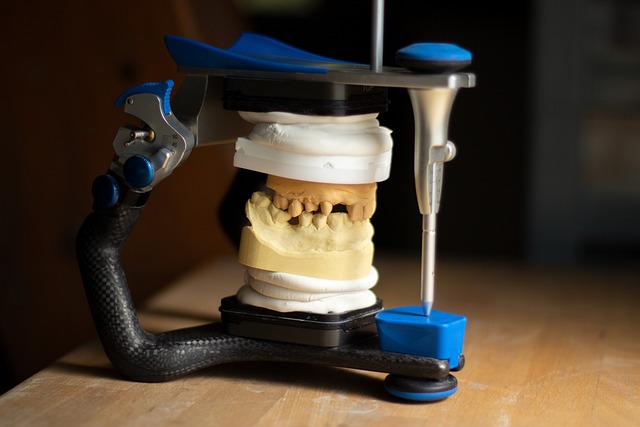Pediatric dentistry is vital for children's overall health, addressing oral care from teething onwards. Top pediatric dentists provide specialized services in a child-friendly environment, catering to unique needs at each developmental stage. Accessing affordable care is challenging due to costs, insurance complexities, and dental anxiety. Families can reduce expenses by utilizing insurance programs like Medicaid and CHIP, understanding terms, and taking advantage of community initiatives offering pro bono services for underserved children.
Accessing affordable pediatric dental care is a growing concern for many families. This crucial aspect of overall health often presents financial barriers, especially in communities with limited resources. This article explores the importance of pediatric dentistry, common challenges in affording it, and various strategies to make quality dental care more accessible. From insurance coverage and government programs to community-driven initiatives and volunteer services, we delve into solutions that ensure children receive the best oral healthcare possible.
- Understanding the Importance of Pediatric Dental Care
- Common Challenges in Accessing Affordable Pediatric Dentistry
- Strategies for Reducing Costs: Insurance and Government Programs
- Community Initiatives and Volunteer Dental Services
Understanding the Importance of Pediatric Dental Care

Pediatric dental care plays a pivotal role in ensuring a child’s overall well-being and long-term oral health. Visiting a pediatric dentist is crucial from the moment teeth start to emerge, as early interventions can prevent common issues like tooth decay and gum disease. Children’s dental health services extend beyond cleaning and filling; they include specialized treatments for growing smiles, such as teeth straightening for kids, which not only improves aesthetics but also aligns jaws and prevents future bite problems.
Choosing the best children’s dentists in your city is an important decision. Look for professionals who understand the unique needs of young patients, offering a fun and comforting environment to ease anxiety. These experts are trained to handle various procedures, from routine check-ups and X-rays to complex treatments, ensuring every child receives personalized care tailored to their developmental stage.
Common Challenges in Accessing Affordable Pediatric Dentistry

Accessing affordable pediatric dental care can be a significant challenge for many families due to several factors. One of the primary obstacles is the cost associated with regular check-ups, cleanings, and necessary treatments. Despite the importance of early dental care for children’s oral health, financial constraints often lead to delays or even avoidance of essential services. This situation is further complicated by the lack of awareness about available resources and options tailored specifically for pediatric dentistry.
Additionally, managing dental anxiety in kids can complicate matters. Many children experience fear or discomfort when visiting the dentist, which may discourage them from undergoing necessary procedures. Dental anxiety management techniques are crucial to ensuring a positive dental care experience for children. Moreover, understanding children’s dental insurance options and navigating their complexities is essential for families seeking affordable care. With proper knowledge and access to kid-friendly toothache treatments and preventive care, parents can secure their children’s oral health without breaking the bank.
Strategies for Reducing Costs: Insurance and Government Programs

Many families face challenges when it comes to affording quality pediatric dental care. However, there are several strategies to reduce costs without compromising on children’s dental health services. One of the most effective is leveraging insurance programs designed specifically for dental care. Many employers offer dental coverage as an employee benefit, and these plans can significantly offset the cost of visits to a pediatric dentist. Understanding the terms and conditions of your insurance policy, including any waiting periods or network restrictions, is crucial.
Additionally, government-backed programs such as Medicaid and CHIP (Children’s Health Insurance Program) provide dental coverage for children from low-income families. These initiatives ensure that even those who may not have access to employer-sponsored insurance can receive the best children’s dentists in their city. For families with special needs, dedicated pediatric dentist for special needs services are available, offering tailored care and support within these programs.
Community Initiatives and Volunteer Dental Services

Many communities are recognizing the importance of early access to dental care for children and implementing community initiatives that provide affordable pediatric dental care. These programs often rely on volunteer dental services, where licensed dentists and dental hygienists give their time pro bono to serve underserved populations. Such efforts not only help children in need but also promote healthy habits for child’s teeth, ensuring a bright future for their oral health.
Kid-friendly environments and specialized kid-focused oral care clinics are integral parts of these initiatives, making the experience less intimidating for both parents and children. By addressing kid-friendly toothaches treatment and other common dental issues early on, these community programs aim to prevent more serious oral health problems down the line.
Ensuring affordable pediatric dental care is paramount for fostering healthy smiles and overall well-being among children. By understanding the unique challenges, such as limited insurance coverage or geographic barriers, and implementing various strategies, including community initiatives and government programs, we can navigate towards better access to quality dental services for all pediatric patients. Collaborating with healthcare professionals, policymakers, and volunteers is essential to creating a robust network that supports the oral health of our youngest citizens, ultimately leading to happier and healthier communities.














